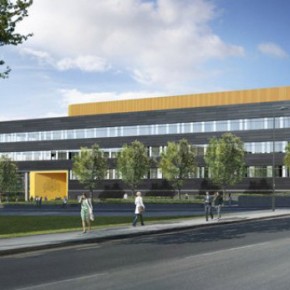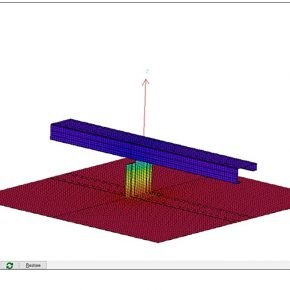
Why construction needs to fully embrace BIM to reap rewards
Stuart Whiting, Associate Director of Technical & Design at Prater, looks at why the industry needs to fully embrace BIM – sooner rather than later – and how, within the overall construction process, the role of the specialist contractor is all about taking the architect’s vision and making it a working reality.
In the last several years, BIM has consistently hit the headlines as the industry debated its potential and discussed the challenges of integrating it into the design and build process.
Today, those involved in the construction of publicly funded work are now undoubtedly feeling the pressure to conform to the requirements of Level 2 BIM and to be digitally compliant by 2016.
Although in 2014 we really saw the step change in the acceptance and adoption of BIM it is still very much a learning process. Despite 3D and 4D modeling, which have been around for five years, there’s still a lot of work to do to ensure the entire supply chain is BIM competent and able to support a specialist contractor like us in our contractual obligations.
The learning curve with BIM shouldn’t be under-estimated. It’s not just about implementing software, but there is a significant monetary investment required as well as time to fully train and educate all those involved with using the chosen software.
Beginning the BIM process
Specialist contractors are very much on the front line when it comes to integrating BIM successfully. We began the process in 2013 and BIM is absolutely helping us to secure new projects. In 2014, Prater was awarded the contract to redevelop the Metropolitan Police Services Headquarters in Hendon, where for the first time, we are utilising a full BIM design strategy, to design and deliver the external envelope solution for two new buildings.
 It’s an extremely extensive project and both buildings require a variety of finishes and as such, BIM will have an integral role to play in the project’s success.
It’s an extremely extensive project and both buildings require a variety of finishes and as such, BIM will have an integral role to play in the project’s success.
It will help us to improve building design accuracy, analyse and identify potential clashes in the construction upfront, giving our supply chain time to address them. In addition, from a health and safety perspective, BIM will help us to see exactly where deliveries will need to be made, allowing us to plan and ensure the necessary precautions are taken on-site.
As the industry adoption of BIM continues, the aim as we see it for BIM Level 2, is to ensure all parties within the supply chain – whether they are an architect, manufacturer or contractor, can electronically share common project data across software packages. This is something we will expect from our own partners going forward.
Anyone who thinks that BIM is a passing fad would be sorely mistaken. However, whilst many are busy talking about BIM’s potential, it’s those taking action now that will benefit later. The industry as a whole has to recognise that the learning curve is going to take time, and that it needs a fully collaborative working ethos from tender stage, through design, construction and into on-going maintenance – to truly reap the rewards of BIM.
One comment on “Why construction needs to fully embrace BIM to reap rewards”
Leave a Reply
You must be logged in to post a comment.
Latest news

26th July 2024
Enfield Speciality Doors completes world-class project for Atlas Copco HQ
A rundown office and warehouse building completely transformed into a modern headquarters for Atlas Copco has been fitted with more than 120 internal fire doors from Enfield Speciality Doors.
Posted in Access Control & Door Entry Systems, Articles, Building Industry News, Building Products & Structures, Building Systems, Case Studies, Doors, Interior Design & Construction, Interiors, Posts, Restoration & Refurbishment, Retrofit & Renovation, Security and Fire Protection, Sustainability & Energy Efficiency, Timber Buildings and Timber Products, Wooden products
26th July 2024
Abloy UK launches new white paper
Abloy UK, a leading provider of security and access control solutions, has launched a new white paper.
Posted in Access Control & Door Entry Systems, Architectural Ironmongery, Articles, Building Industry News, Building Products & Structures, Building Services, Doors, Facility Management & Building Services, Health & Safety, Information Technology, Innovations & New Products, Publications, Research & Materials Testing, Security and Fire Protection
26th July 2024
MCRMA Member Profile: David Roy, Director of Roofconsult
David Roy of MCRMA member company Roofconsult has more than 50 years’ experience to draw upon working in the building envelope sector and a unique perspective on how it has changed in that time.
Posted in Articles, BIM, Infrastructure & CAD Software, Building Associations & Institutes, Building Industry News, Building Products & Structures, Building Services, Building Systems, Cladding, Information Technology, Restoration & Refurbishment, Retrofit & Renovation, Roofs, Walls
26th July 2024
Strand: Enhancing Door Functionality and Safety
Craig Fox, Sales Director for Strand Hardware, outlines how door industry professionals might apply door limiting stays…
Posted in Architectural Ironmongery, Articles, Building Industry News, Building Products & Structures, Building Services, Doors, Facility Management & Building Services, Health & Safety, Restoration & Refurbishment, Retrofit & Renovation

BIM industry is also a booming field. The increase in the use of BIM industry is widened in recent years. Securing newer projects to redeveloping the services all is successfully done by BIM. In the coming times BIM is going to be more frutiful and thus the increase in usage of the services.
http://www.chemionix.com/